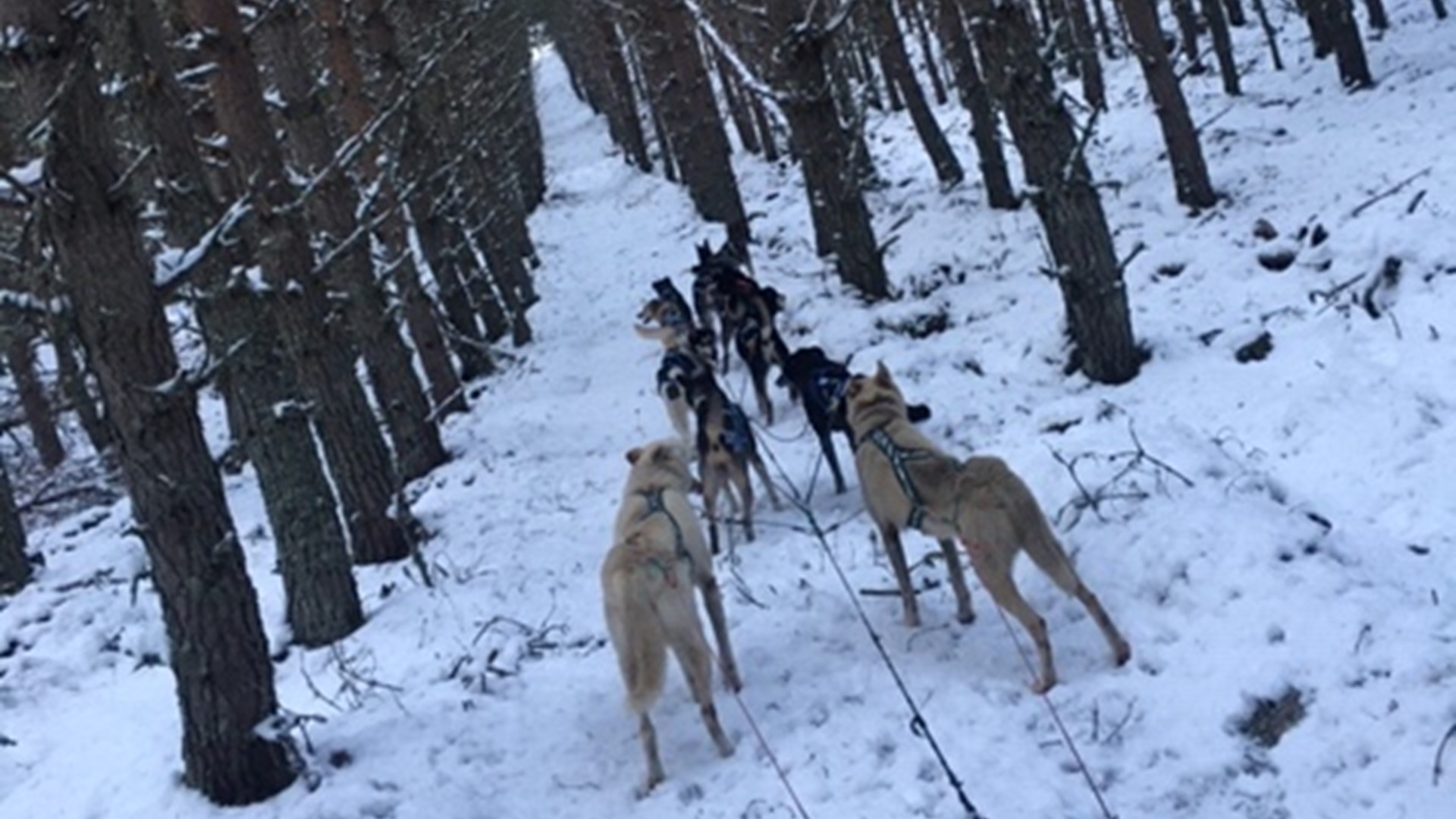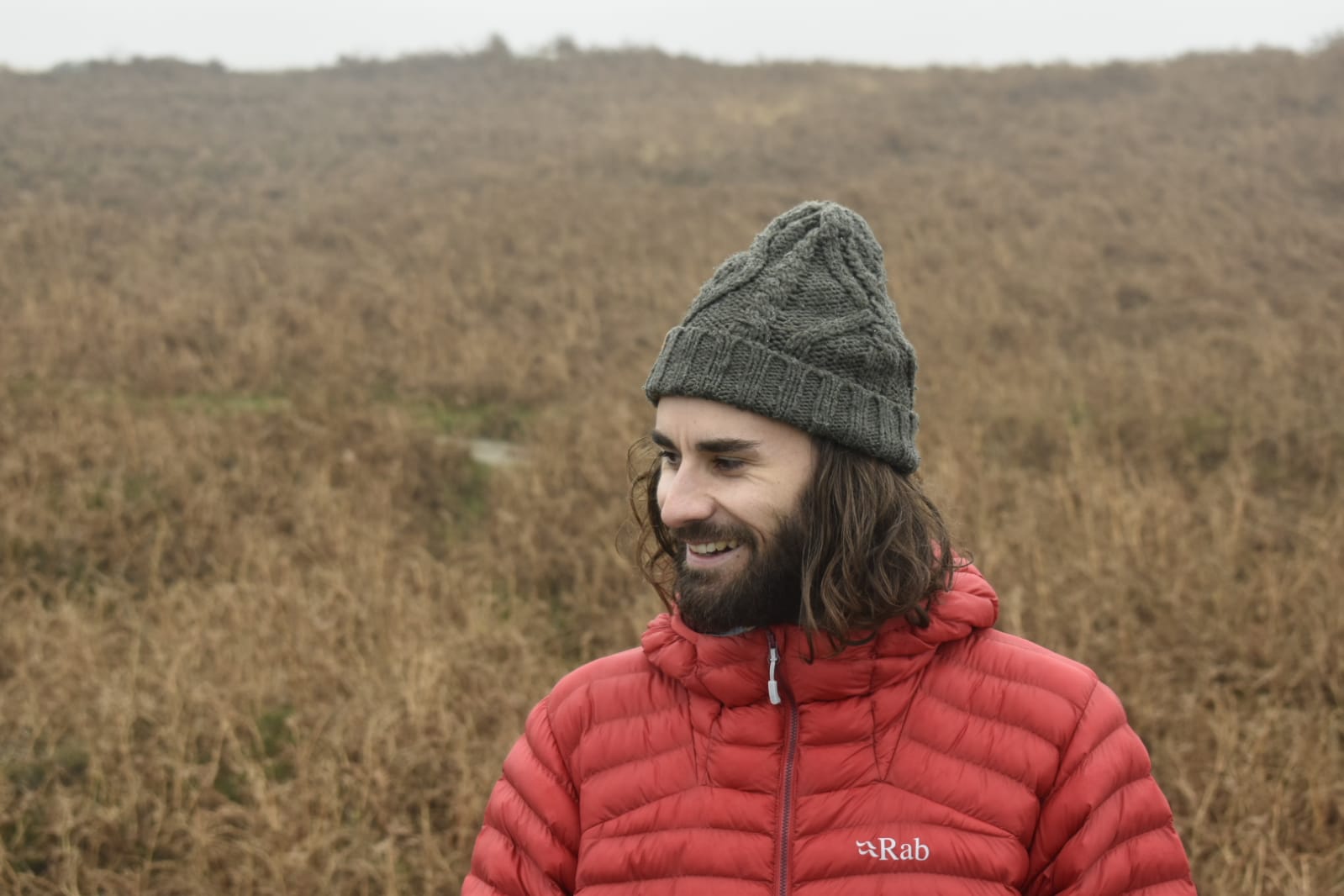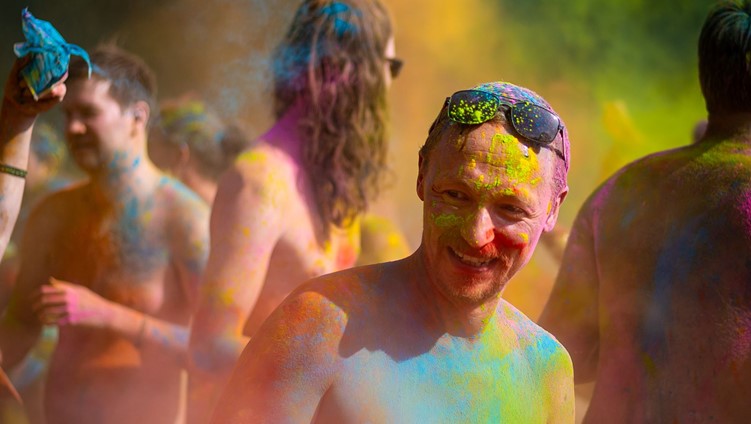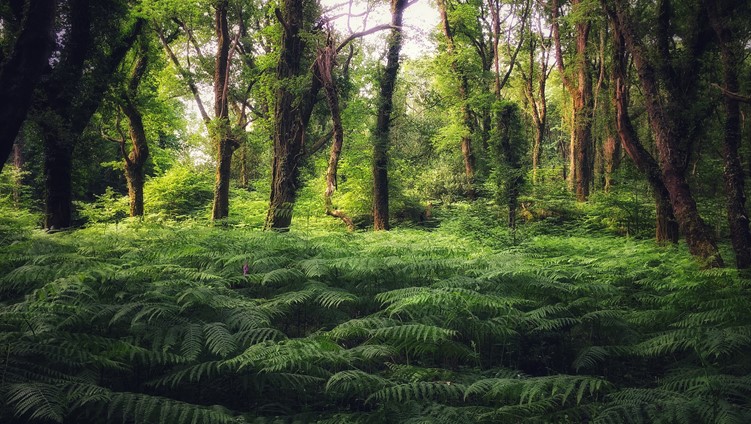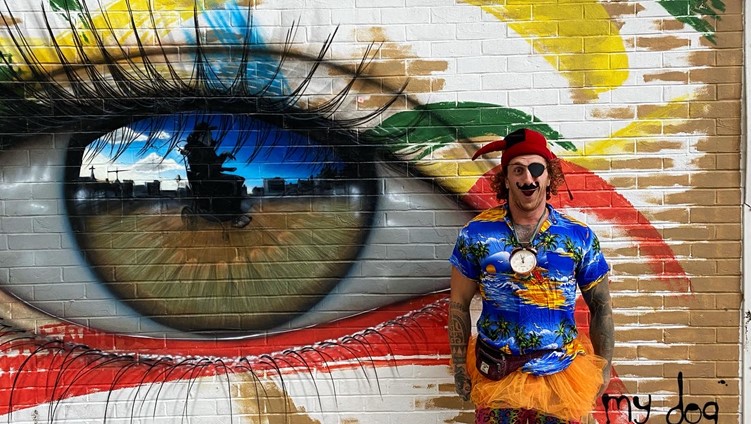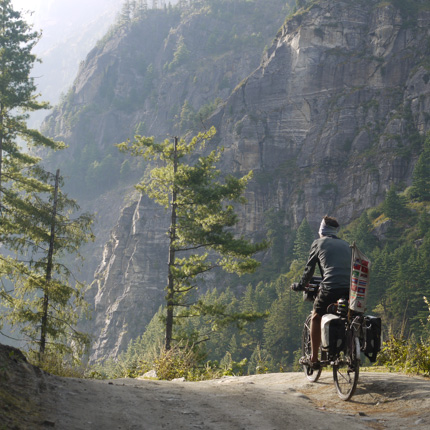
Alan, what is the story on the Centre closing down operations? Do you attribute it solely to climate change?
We have to condition the dogs pre-season: put around 2000 miles on them, slowly build them up from the summer break. We do not run sleddogs in over ten degrees celsius, so it’s early morning runs or late evening runs, minimum twelve to eighteen-mile sessions using large ATVs and a team of fourteen dogs. We have around eighteen miles of purpose-built sleddog trails.
Around six years ago I started noticing our season getting shorter. I started to notice the trails never truly drying out in the muddy, boggy areas. There were also lots of mid/high winds storms. The number of huge trees coming down across the trails became so bad that I had to carry a chainsaw and fuel with me on every training run. The trees were being ripped up by the root due to the waterlogged ground. Pro sleddog kennels (mushers) do not rely on snow, but we must have cold temperatures. Anything over ten degrees will damage a dog (in real training). For the last ten years the snowfall in the Cairngorms has been farcical. We sold our snowmobile, once used to set snowbound trails at the centre, years ago.
When you opened the centre did closing in this way seem a possibility?
I moved to the foot of the Cairngorms mountain range for the maximum winter I could possibly get for my dogs and way of life. The first ten years we got great winters - sometimes so much snow we could not move around for days, until we managed to make packed roads and paths to walk on. We had good routines to deal with it all: two snowmobiles, packers and snow cutters.
I always knew the day would come to call it a day and stop renewing the dog yard etc. Training sleddogs is not easy. It’s 24/7. As a hobby most simply race their dogs the odd weekend and train a few days a week. The maximum mileage in UK events is three miles (a walk in the park). I left that world twenty-two years ago having got very bored with it. Winning UK events meant nothing compared to crossing the Alps in a two-week sleddog event. But to do that you need to take it seriously, like any sport I reckon.
For the last six years I knew we would have to look at closing in 2020. I also have lots of mushing mates around the world who I speak to on the issue. Most of the good sleddog events around the world were lacking one thing: snow. The best ski centres around the world depend on making snow. The farcical response by UK ski centres can be seen very clearly: snow machines which only spit out enough to cover the short five-year-old. The Olympic Games, BBC Ski Sunday… all with artificial snow.
Photos of the Centre's sled dogs
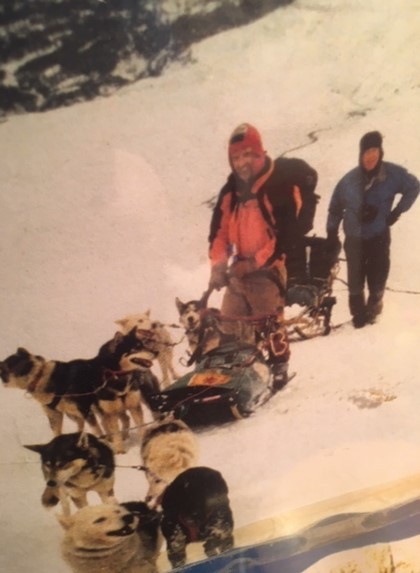
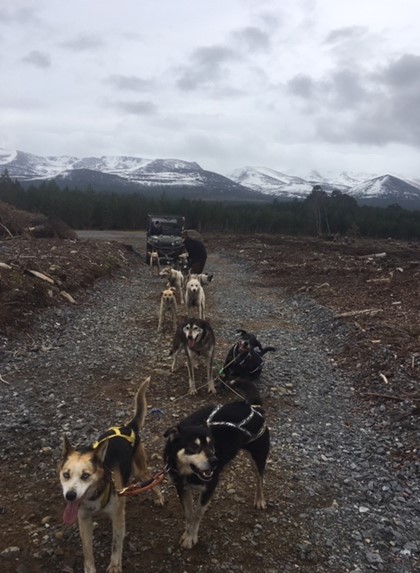
Have you been able to pivot to new activities? What do you think the future holds for you?
Having sleddogs, to me, has never been a commercial venture. It was very unique to have the UK’s only sleddog centre. Paying clients joined us on real sleddog train sessions, which did work for us commercially. We introduced insight courses along the way to truly try and stop people coming into the sport, due to the amount of time and money and dog welfare needed.
It is all about bloodlines with sleddogs. With real sleddogs you don’t have to train them to work as sleddogs ... the genes do it all. All my dogs came in from the USA, from top racing kennels in Montana and the Yukon. I had seen first hand what the UK Kennel Club had done to the breed in the UK. The sport in the UK is one step up from walking a dog.
When I started to understand climate change and how it was going to change our way of life forever, we stopped breeding programs and bringing in new dogs from Europe. We then put in place a date for shutting the Centre.
My career since 1980 has helped me do anything I want in life. I am lucky to have a wife, Fiona, who understands that. She helped make the Cairngorms Sleddog Centre the success it was. My son John started running sleddogs aged six. He became the most successful UK sleddog racer in history, competing at the highest level in Alaska and Canada.
My ‘career’ was my first real hobby. Aged sixteen I started scuba diving in remote Scottish lochs for shellfish. I became a deep-saturation diver in the oil industry and worked all over the world. The last eighteen years have been with a deep team in the North Sea called The Broady Bunch, named after our superintendent, Chris Broady. I am still involved in the deep-diving industry, but not as a diver (age caught up). I am now a dive rep for oil companies. Without diving wages, nothing happened. I call it the real world!
In terms of future plans, I race off-road safari 4x4 buggies in the summer and enjoy long remote enduro rides on my KTM500. In the winter I look forward to spending what winter we get with my sleddog team and doing some remote mountain projects I could not do with clients. As for the Centre, we will simply go back to being a real sleddog kennel, with ageing dogs and owner.
What do you think this signals for the skiing and snow-based adventure industry in Scotland looking forwards?
The wrong people are running everything! They are only there to pick up wages and have no interest in groundroots winter sports. Take the Cairngorm Mountain Railway. An Austrian company builds it and after a while, it sinks and the ski centre goes bust. Once again, they spend two million for a snow-making machine which can’t cover the size of a tennis court from - wait for it - Australia!
I have sat in Cairngorm National Park meetings with so-called outdoor experts. They all get paid crazy money. For what? They sent a Cairngorm ‘input party’ to some top world ski centres a few years ago, to see how they ran things. A free jolly for the rip-off team. Jackson Hole, Wyoming was one place they went too … so unlike Aviemore!
They need to make it an all-year-round ski centre, cover the hill with artificial ski runs with a railway involved. There has been no ski sport events held in the Cairngorms for years. It’s finished now.
Do you have any particularly fond adventures (or misadventures!) from the centre during its time?
Every time I go out with my dogs we have real adventures! I test my leaders every time. My eighteen-mile trails have 72 turns. It’s very rare. My leaders make mistakes: running at night in minus eighteen degrees is always good, but very rare now.
One good adventure was being involved with the Jamaican Sleddog Team, who came to our centre. We trained a horse whisperer to be a real sleddog musher. I went to Jamaica and set up a centre and museum. The Jamaican I trained went on to race in the 1200 miles Iditarod sleddog event in Alaska. I was in Nome, Alaska to watch him cross the finish line. The first and only black musher in history to finish the toughest event in the world!
To date, no one has repeated or even attempted our trip over The Cairngorm range - Ben MacDui mid-winter. All the dogs on that trip have passed now. I don’t like talking much about that adventure due to them not being around. As a musher I also raced in Europe and crossed Dolomites and Alps many times. I won the biggest race in South America, held in remote Ushuaia, Argentina (700 miles). We drove 30 sleddogs from Chile to Argentina, crossed the Magellan Strait on a WW2 landing craft. My handler and helper was my son John, aged eleven. The best memories!
My centre is dedicated to a Scot who helped start the sport of sleddog racing in Alaska. I wrote a book about him, and traced his family in Scotland and found his resting place in the USA. The centre was also involved the top-secret WW2 sleddogs from the USA, involved in the heavy water projects in Norway.
The centre would not have worked without hard work and major commitment from my family, and the chance meeting of the local laird (landowner), who believed in my idea and way of life.
But the main heroes at the centre are/were the sleddogs … the rest are simply humans. It’s a privilege to call them all my very close friends. I will always remember the stare my dogs give me every time I walk into my dog yard. Every dog locks on to me and I can hear them saying ‘Ok, let’s go!’
Keep exploring



